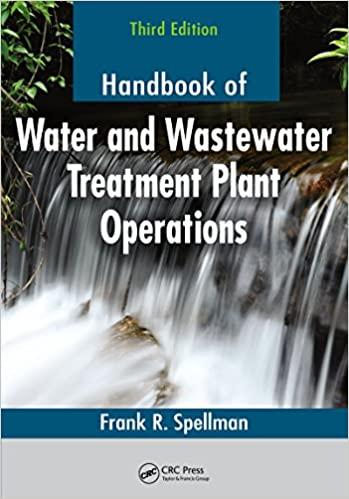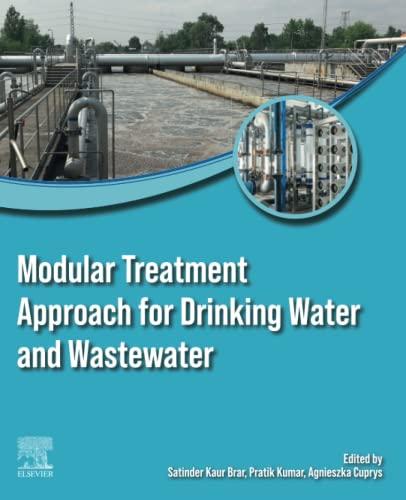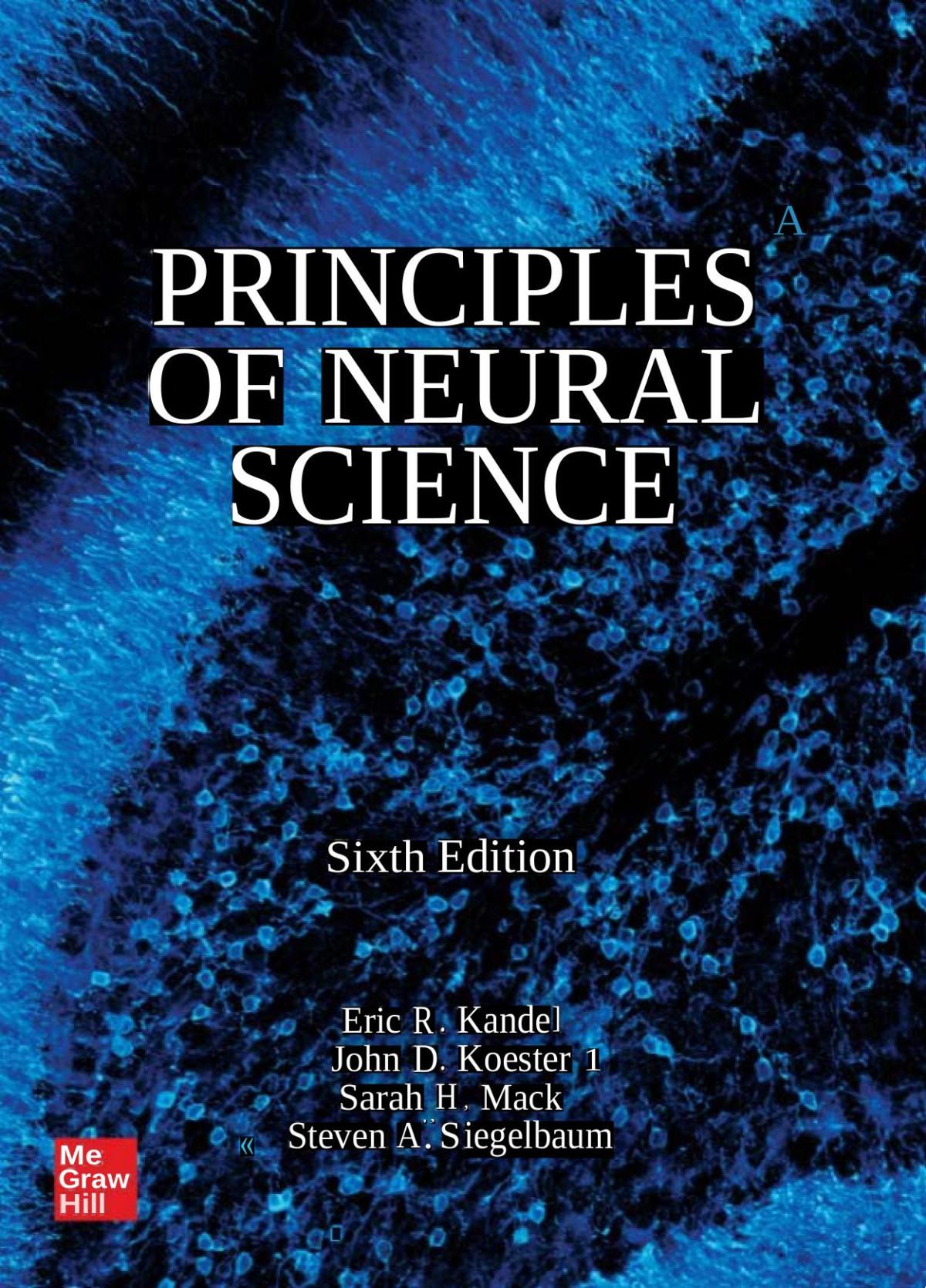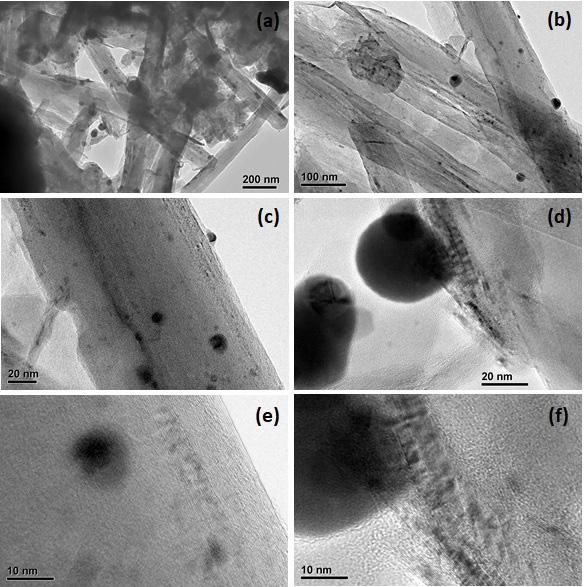https://ebookmass.com/product/catalytic-processes-for-water-
Instant digital products (PDF, ePub, MOBI) ready for you
Download now and discover formats that fit your needs...
Catalytic Processes for Water and Wastewater Treatment John Vakros
https://ebookmass.com/product/catalytic-processes-for-water-andwastewater-treatment-john-vakros/
ebookmass.com
Handbook of Water and Wastewater Treatment Plant Operations
https://ebookmass.com/product/handbook-of-water-and-wastewatertreatment-plant-operations/
ebookmass.com
Modular Treatment Approach for Drinking Water and Wastewater Satinder Kaur Brar
https://ebookmass.com/product/modular-treatment-approach-for-drinkingwater-and-wastewater-satinder-kaur-brar/
ebookmass.com
Transportation: A Global Supply Chain Perspective 9th Edition – Ebook PDF Version
https://ebookmass.com/product/transportation-a-global-supply-chainperspective-9th-edition-ebook-pdf-version/
ebookmass.com
Agriculture's Ethical Horizon 3rd Edition Robert L. Zimdahl
https://ebookmass.com/product/agricultures-ethical-horizon-3rdedition-robert-l-zimdahl/
ebookmass.com
Principles of Neural Science (Sixth Edition) Eric R. Kandel
https://ebookmass.com/product/principles-of-neural-science-sixthedition-eric-r-kandel/
ebookmass.com
Tarot para principiantes: Una guía sencilla para leer las cartas del tarot, las tiradas básicas y el desarrollo psíquico Silvia Hill
https://ebookmass.com/product/tarot-para-principiantes-una-guiasencilla-para-leer-las-cartas-del-tarot-las-tiradas-basicas-y-eldesarrollo-psiquico-silvia-hill/ ebookmass.com
(eTextbook PDF) for Operations Management: Processes and Supply Chains 12th Edition by Lee J. Krajewski
https://ebookmass.com/product/etextbook-pdf-for-operations-managementprocesses-and-supply-chains-12th-edition-by-lee-j-krajewski/
ebookmass.com
How Trade with China Threatens Western Institutions: The Economic Roots of a Political Crisis 1st Edition Robert Gmeiner
https://ebookmass.com/product/how-trade-with-china-threatens-westerninstitutions-the-economic-roots-of-a-political-crisis-1st-editionrobert-gmeiner/
ebookmass.com
Her Outcast Scot (The Highland Warrior Chronicles Book 5)
Christina Phillips
https://ebookmass.com/product/her-outcast-scot-the-highland-warriorchronicles-book-5-christina-phillips/
ebookmass.com
www.mdpi.com/journal/catalysts
Edited by
John Vakros
CatalyticProcessesforWaterand WastewaterTreatment CatalyticProcessesforWaterand WastewaterTreatment Editor
JohnVakros
MDPI • Basel • Beijing • Wuhan • Barcelona • Belgrade • Manchester • Tokyo • Cluj • Tianjin
Editor
JohnVakros
ChemicalEngineering UniversityofPatras Patras
Greece
EditorialOffice
MDPI
St.Alban-Anlage66 4052Basel,Switzerland
ThisisareprintofarticlesfromtheSpecialIssuepublishedonlineintheopenaccessjournal Catalysts (ISSN2073-4344)(availableat:www.mdpi.com/journal/catalysts/special issues/catalytic wastewater treatment).
Forcitationpurposes,citeeacharticleindependentlyasindicatedonthearticlepageonlineandas indicatedbelow:
LastName,A.A.;LastName,B.B.;LastName,C.C.ArticleTitle. JournalName Year, VolumeNumber, PageRange.
ISBN978-3-0365-7299-4(Hbk) ISBN978-3-0365-7298-7(PDF)
©2023bytheauthors.ArticlesinthisbookareOpenAccessanddistributedundertheCreative CommonsAttribution(CCBY)license,whichallowsuserstodownload,copyandbuildupon publishedarticles,aslongastheauthorandpublisherareproperlycredited,whichensuresmaximum disseminationandawiderimpactofourpublications.
ThebookasawholeisdistributedbyMDPIunderthetermsandconditionsoftheCreativeCommons licenseCCBY-NC-ND.
Contents AbouttheEditor vii
Prefaceto”CatalyticProcessesforWaterandWastewaterTreatment” ............... ix
JohnVakros
CatalyticProcessesforWaterandWastewaterTreatment
Reprintedfrom: Catalysts 2023, 13,677,doi:10.3390/catal13040677.................. 1
GururajM.Neelgund,SanjuanaFabiolaAguilar,EricaA.JimenezandRamL.Ray AdsorptionEfficiencyandPhotocatalyticActivityofSilverSulfideNanoparticlesDepositedon CarbonNanotubes
Reprintedfrom: Catalysts 2023, 13,476,doi:10.3390/catal13030476.................. 7
ShakeelKhan,AwalNoor,IdreesKhan,MianMuhammad,MuhammadSadiqandNiaz Muhammad
PhotocatalyticDegradationofOrganicDyesContaminatedAqueousSolutionUsingBinary CdTiO2 andTernaryNiCdTiO2 Nanocomposites
Reprintedfrom: Catalysts 2022, 13,44,doi:10.3390/catal13010044.................. 27
CristinaPeiYingKong,NurulAmaninaA.Suhaimi,NurulizzatulNingshehM.Shahri, Jun-WeiLim,MuhammadNurandJonathanHobleyetal. AuramineOUVPhotocatalyticDegradationonTiO2 NanoparticlesinaHeterogeneous AqueousSolution
Reprintedfrom: Catalysts 2022, 12,975,doi:10.3390/catal12090975.................. 47
NurulAmaninaA.Suhaimi,CristinaPeiYingKong,NurulizzatulNingshehM.Shahri, MuhammadNur,JonathanHobleyandAnwarUsman
DynamicsofDiffusion-andImmobilization-LimitedPhotocatalyticDegradationofDyesby MetalOxideNanoparticlesinBinaryorTernarySolutions
Reprintedfrom: Catalysts 2022, 12,1254,doi:10.3390/catal12101254................. 63
JishuRawal,UroojKamran,MiraPark,BishweshwarPantandSoo-JinPark NitrogenandSulfurCo-DopedGrapheneQuantumDotsAnchoredTiO2 Nanocompositesfor EnhancedPhotocatalyticActivity
Reprintedfrom: Catalysts 2022, 12,548,doi:10.3390/catal12050548.................. 79
SourayaGoumri-SaidandMohammedBenaliKanoun InsightintotheEffectofAnionic–AnionicCo-DopingonBaTiO3 forVisibleLightPhotocatalytic WaterSplitting:AFirst-PrinciplesHybridComputationalStudy
Reprintedfrom: Catalysts 2022, 12,1672,doi:10.3390/catal12121672................. 99
LuminitaIsac,CristinaCazan,LuminitaAndronicandAlexandruEnesca CuS-BasedNanostructuresasCatalystsforOrganicPollutantsPhotodegradation
Reprintedfrom: Catalysts 2022, 12,1135,doi:10.3390/catal12101135................. 111
MarieLePivert,Aur´eliePiebourg,St´ephaneBastide,MyriamDucandYaminLeprince-Wang DirectOne-StepSeedlessHydrothermalGrowthofZnONanostructuresonZinc:Primary StudyforPhotocatalyticRoofDevelopmentforRainwaterPurification
Reprintedfrom: Catalysts 2022, 12,1231,doi:10.3390/catal12101231................. 129
AkbarMehdizadeh,ZahraDerakhshan,FaribaAbbasi,MohammadRezaSamaei, MohammadAliBaghapourandMohammadHoseinietal.
TheEffectofArseniconthePhotocatalyticRemovalofMethylTetButylEther(MTBE)Using Fe2O3/MgOCatalyst,Modeling,andProcessOptimization
Reprintedfrom: Catalysts 2022, 12,927,doi:10.3390/catal12080927.................. 143
MariaAntonopoulou,MariaPapadaki,IlaeiraRaptiandIoannisKonstantinou PhotocatalyticDegradationofPharmaceuticalAmisulprideUsingg-C3N4 CatalystandUV-A Irradiation
Reprintedfrom: Catalysts 2023, 13,226,doi:10.3390/catal13020226.................. 155
IlaeiraRapti,VasilikiBoti,TriantafyllosAlbanisandIoannisKonstantinou PhotocatalyticDegradationofPsychiatricPharmaceuticalsinHospitalWWTPSecondary EffluentsUsingg-C3N4 andg-C3N4/MoS2 CatalystsinLaboratory-ScalePilot
Reprintedfrom: Catalysts 2023, 13,252,doi:10.3390/catal13020252.................. 169
LalitGoswami,AnamikaKushwaha,SarojRajKafleandBeom-SooKim SurfaceModificationofBiocharforDyeRemovalfromWastewater
Reprintedfrom: Catalysts 2022, 12,817,doi:10.3390/catal12080817.................. 183
SpyridonGiannakopoulos,JohnVakros,ZachariasFrontistis,IoannisD.Manariotis,Danae VenieriandStavrosG.Poulopoulosetal.
BiocharfromLemonStalks:AHighlyActiveandSelectiveCarbocatalystfortheOxidationof SulfamethoxazolewithPersulfate
Reprintedfrom: Catalysts 2023, 13,233,doi:10.3390/catal13020233.................. 211
KonstantinosKouvelis,AdamantiaA.Kampioti,AthanasiaPetalaandZachariasFrontistis DegradationofSulfamethoxazoleUsingaHybridCuOx–BiVO4/SPS/SolarSystem
Reprintedfrom: Catalysts 2022, 12,882,doi:10.3390/catal12080882.................. 231
AbouttheEditor JohnVakros
JohnVakrosservesasresearcherintheDepartmentofChemicalEngineeringatUniversityof Patras.Histeachingactivitiescovergeneralchemistry,physicalchemistry,catalysisandinstrumental chemicalanalysis.Hisresearchactivitiesareinthefieldofheterogeneouscatalysis,preparation ofcatalysts,preparationandcharacterizationofbiocharsandapplicationofnovelmaterialsfor environmentalprotection.
Prefaceto”CatalyticProcessesforWaterand WastewaterTreatment” Waterandwastewatertreatmentarestillfacingsignificantchallengestoday.Duetoclimate change,watershortagesarealreadynoticeableinmanyregionsoftheworld.Toovercomethese problems,alternativewatersourcesmustbegeneratedandused;forexample,treatedwastewater, rainwater,surfacewater,etc.Thesewatersourceshavetobetreatedbeforeusesincethe developmentofhighlysensitivemethodsrevealsthepresenceofhazardouscompoundsinlow concentrations.Thesepollutantsshouldberemoved,andmanyprocesseshavebeenproposedfor theirdegradation/removal,amongthemcatalyticmethods.
Thosewherecatalystsareinsolidforminparticularexhibitsignificantadvantages.
Catalyticoxidationorreductionprocessesareamongthemostefficientprocesses.Theseinclude photocatalysis,sulfateandhydroxyl-radical-basedadvancedoxidationprocesses.
ThisSpecialIssuecontainsthecontributionsofdifferentresearchgroupsanddiscussestherecent progressandadvancesincatalyticprocessesinwaterandwastewatertreatment.
JohnVakros Editor
Editorial
catalysts CatalyticProcessesforWaterandWastewaterTreatment JohnVakros 1,2
1 DepartmentofChemicalEngineering,UniversityofPatras,Caratheodory1,UniversityCampus, GR-26504Patras,Greece;vakros@chemistry.upatras.gr
2 SchoolofSciencesandEngineering,UniversityofNicosia,2417Nicosia,Cyprus
Citation: Vakros,J.Catalytic ProcessesforWaterandWastewater Treatment. Catalysts 2023, 13,677. https://doi.org/10.3390/catal13040677
Received:27March2023
Revised:28March2023
Accepted:29March2023
Published:30March2023
Copyright: ©2023bytheauthor. LicenseeMDPI,Basel,Switzerland. Thisarticleisanopenaccessarticle distributedunderthetermsand conditionsoftheCreativeCommons Attribution(CCBY)license(https:// creativecommons.org/licenses/by/ 4.0/).
Waterandwastewatertreatmentstillfacesignificantchallengestoday.Duetoclimate change,watershortagesarealreadynoticeableinmanyregionsoftheworld.Toovercometheseproblems,alternativewatersourcesmustbegeneratedandused,forexample, treatedwastewater,rainwater,surfacewater,etc.Sincethedevelopmentofhighlysensitive methodsrevealsthepresenceofhazardouscompoundsinlowconcentrations,thesewater sourcesmustbetreatedbeforeuse.Thedetectedcompoundsincludepharmaceuticals, whichhaveaseriousinfluenceonhumanhealth.Generally,theconcentrationsofthese compoundsislow.However,recentstatisticshaverevealedthatthepercapitaconsumption ofmedicineswithintheEuropeanUnionfortheperiodof2000–2014hasalmosttripled, reflectingtheexcessiveandperhapsrecklessuseofsimilarproducts.Inparticular,there arenumerousdifferentwaysthatremediesmaypermeateintosurfacerecipients,suchas landfillleachates,excessiveconsumptionbypeoplethemselves,highvolumesoforganic hospitaleffluents,andtheundeniablyincorrectrejectionofmedicinesthathaveexpiredor werenotused.Duetotheincompletebiodegradationofcomplexorganicmoleculesinconventionalwastewatertreatmentplants,theaccumulationoforganicpollutantsonsurface watersendangersbiodiversitythroughitspotentialtoxicity.Thus,thesepollutantsshould beremoved.Manyprocesseshavebeenproposedfortheirdegradation/removal,including catalyticmethods.Thesemethods,inwhichcatalystsareinasolidforminparticular, exhibitsignificantadvantagessuchaseasyseparation,betterstability,higheractivity,anda lowercostoftheprocess.Catalyticoxidationorreductionprocessesareamongthemost efficientprocesses.Theseincludephotocatalysisandsulfate-andhydroxyl-radical-based advancedoxidationprocesses.
Theapplicationofasolidcatalystinaremovalexperimentcombinesnotonlythe oxidationreactionbutalsotheadsorptionofthecontaminantonthecatalystsurface.The adsorptionisanecessarystepforthecatalyticprocess,andhydrophilicityofthesurface isrequiredinsuchcases.Byitself,adsorptionveryusefulforremovingheavymetalions. Heavymetalsarehighlysolubleinwaterandaretoxic,carcinogenic,andnon-degradable. InthestudybyNeelgundetal.[1],ananocompositeCNTs-Ag2Swaspreparedthroughthe faciledepositionofAg2Snanoparticlesontooxidizedcarbonnanotubes(CNTs),usingthe hydrothermalmethod.Atfirst,thehydrophobicCNTsweretreatedwithconcentratednitric andsulfuricacidsunderreflux.Themodificationincreasedthehydrophilicnatureofthe CNTsbyintroducingoxygenspeciesontothesurface.TheAg2Snanoparticleswerethen depositedontothemodifiedCNTs.TheCNTs-Ag2SismoreefficientthanCNTsandAg2S andcancompletelyadsorbCd(II)within80min.Theadsorptionfollowspseudo-secondorderkinetics,whileintraparticlediffusionandtheboundarylayereffectcontributetothe removalofCd(II)[1].TheCNTs-Ag2Scanalsoactasaphotocatalystforthedegradation ofalizarinyellowR(AYR),adyeusedinthetextileindustry.Withtheirradiationofthe materialwithnaturalsunlight,completedegradationofAYRisachieved.Thedegradation followspseudo-first-orderkinetics.Differentreactivespeciessuchaselectrons,holes, hydrogenperoxide,andROSaretheactivespeciesforthedegradation,andtheCNTs-Ag2S wasfoundtobestableforthreecycles[1].
Photocatalysisisprobablythemostcommonmethodusedforthedegradationof organiccompoundsinwatermatrices,andtitania-basedmaterialsarewidelyusedas photocatalysts.InthestudybyKhanetal.,[2]binaryCdTiO2 andternaryNiCdTiO2 werecomparedwithbareTiO2 forthephotocatalyticdegradationoforganicdyessuch asmethyleneblue(MB)andmethylgreen(MG).Itwasfoundthatthephotocatalytic degradationofTiO2,CdTiO2,andNiCdTiO2 forMBwas77,82,and86%,whileforMG thebinaryandternarymaterialswereevenbetter,achievingadegradationof63.5,88,and 97.5%,respectively.Inallthreematerials,theTiO2 wasintheformofanatase,whilethe depositionofCdandNicausedaredshiftintheabsorbancespectrabycouplingwithNi andCd.Thisshiftcanbeconsideredresponsiblefortheenhancedphotocatalyticactivity. Konget.al.[3]usedanataseTiO2 todegradeAuramineO(AO)under365nmlight irradiation.Thetitaniananoparticleshadameandiameterof100nm.Thedegradation processfollowedapseudo-firstorderreaction,withk=0.048 ± 0.002min 1.Thisvalueis significantlylowerthanthecorrespondingvalueforthedegradationofmethyleneblue (0.173 ± 0.019min 1);thisisduetothenonplanarstructureofAO.Thehigherphotocatalyticefficiencywasfoundtobe96%,anditdecreasednonlinearlywithanincreaseinthe initialconcentrationandcatalystdosage.Finally,theauthorsconfirmedthesuperiorityof titaniananoparticlescomparedtotheuseofmicro-sizedpowders.
Thedegradationprocessismorecomplicatedwhenmorethanonedyeispresentinthe solution;however,thisscenarioisalsomorerealistic.Therefore,therearenumerousstudies inwhichbinaryorternarysolutionsofdyesareusedinphotocatalyticdegradation.In thisrecentreview[4],thephotocatalyticbehaviorofmethylene,rhodamineB,andmethyl orangeintheirbinaryorternarysolutionswassummarized.Inthisreview,theimportance ofdiffusionwasdiscussed.Itwasrevealedthatsmallerdyeswithaplanarconformation areeasiertodegradeanddominateinphotocatalyticdegradationintheirbinaryorternary solutions.
Althoughtitaniaislikelythebetterphotocatalyst,ithassomelimitations,among whichisitslimitedopticaladsorptioninthevisiblelightspectrum.Manymethodshave beenusedtofurtherexpandtheopticalUV–VisabsorptionregionofTiO2 andtoenhance theefficientlight-inducedchargeseparation.ThebestoptionreportedistocombineTiO2 withtypicalnarrow-bandgapquantumdots(QDs)ofdifferentsemiconductorsandcarbon quantumdots(CQDs).IntheworkofRawalet.al.,[5]nitrogen(N)andsulfur(S)co-doped graphenequantumdots(GQDs)wereused.ThismaterialhasanarrowedEgvaluethat improvesphotogeneratedelectrontransferdueto π-conjugation.Theactivitywasfound tobe2.3–3timeshigherthanthatofTiO2.Thephotocatalystwasstableforatleastthree cycles,andtheformationofC-O-Tibondsprovidedachargetransferpathway.
BaTiO3 isanotherpromisingmaterial,especiallywhenitiscombinedwiththedoubleholecouplingofanion–anioncombinations.Bariumtitanatehasaperovskitestructure andlargebandgapof3.0–3.3eV;ithastheappropriatebandpositionstosplitwater intohydrogenandoxygen,althoughthebandgapshouldberegulatedinlowervaluesto providetheabilitytoabsorbmorevisiblelight.Ithasalsobeenreportedthatbysubstituting ametaldopantataBaorTisite,adirecteffectonthebandgapenergy(Eg),thestability, andtheformationofoxygenvacanciescanbeachieved.Onthisbasis,theelectronic propertiesandopticalabsorptioncharacteristicsofBaTiO3,withthedouble-holecoupling ofanion–anioncombinationsusingfirst-principlesmethods,werestudied.Itwasfound thattheN–Nco-dopedBaTiO3 exhibitedamorefavorableformationenergyunderan O-poorcondition,andalltheco-dopingconfigurationsreducedthevalueofEg.Thetuning oftheEgmakesthephotocatalystapromisingcandidateforvisible-lightwatersplitting[6].
Duetotheimportanceofphotocatalysis,asitisoneofthemostinnovativeadvanced oxidationtechniquesused,manymaterialshavebeentestedfortheirphotocatalyticactivity. Aphotocatalyticprocessshouldpresentahighefficiency,lowcost,andavoidtheproductionofintermediateproductswithahightoxicity.Theselectionofaphotocatalystisvery important,asitmustbecheap,stable,environmentallyfriendly,andhavehighactivity. Usually,aphotocatalystisasemiconductorwithahighdegreeofabsorptionoflight,prefer-
ablysolarlight,andhighrateofphotogeneratedchargecarriers.Onereviewsummarized theapplicationofCuSasaphotocatalyst[7].CuSisap-typesemiconductorwithdifferent nanostructures,suchasnanoparticlesandquantumdotsorheterojunctionswithcarbon materials,organicmaterials,ormetaloxides.Therecentdevelopmentsinorganicpollutant photodegradationwithaCuSascatalystarediscussedonthebasisofdifferentsynthesis parameters(Cu:Smolarratios,surfactantconcentrationetc.)andproperties(particlesize, morphology,bandgapenergy,andsurfaceproperties)
InthestudybyLePivertet.al.,[8],ZnOnanoparticlesweresynthesizedontoZn andusedasroofforthephotocatalyticremovaloforganiccontaminantsinrainwater. TheauthorspreparedtheZnOnanoparticlesontheZnroofwithahydrothermalgrowth methodin2h.ThepresenceofZn(II)ionsandthenativeoxidefilmontheZnsurface actedasactivesitesforthegrowthofZnOnanoparticles.Thephotocatalyticactivitywas determinedusingMethyleneBlueunderUVirradiationandAcidRed14withsolarlight. TheremovalofMethylTertButylEther(MTBE)usingFe2O3/MgOasacatalystwas studiedinthepresenceofarsenicunderUVirradiation[9].Thecatalystcontained33.06% Fe2O3 and45.06%MgO.Themainparametersofthedegradationprocess,includingthe effectofarsenicandMTBEconcentrations,catalystmass,pH,etc.,werestudied.Itwas foundthattheconcentrationofMTBEinfluencedthemostthephotocatalyticprocess. ThehigherperformanceintheremovalofMTBEwasachievedatpH=5andaninitial concentrationofMTBeequalto37.5mg/L,withacatalystdoseof1.58mg/Lwithout thepresenceofAs.Thepresenceofarsenicdecreasedtheremovalefficiencyremarkably. Therefore,pretreatmentfortheremovalofarsenicandmoredetailsofthisinterference effectaresuggested.
Psychiatricdrugs,includingamisulpride,atypicalantipsychoticdrug,areaclass ofpharmaceuticalsthatareoftenprescribedandusedinawiderangeofmentalhealth problems.Theiruseisincreasingworldwide.Graphiticcarbonnitride(g-C3N4)canbeused asphotocatalystforthedegradationofthistypeofdrug.IntheworkofAntonopoulouet. al.[10],theapplicationofg-C3N4 catalystsforthedegradationofamisulpridewasstudied. Particularly,inthedegradationprocessofamisulprideunderUV-Airradiationwiththe applicationofg-C3N4,thetransformationproductsandtheecotoxicologicalassessment wereinvestigated.Itwasfoundthatthedegradationpathwaysofamisulprideincluded mainlyoxidation,dealkylation,andthecleavageofthemethoxygroup.Themainreactive specieswerefoundtobeh+ andO2 •−.Inultrapurewater,thetransformationproductshad alowtoxicity,whileanincreasedtoxicitywasobservedwhenwastewaterwasusedasa matrix,especiallyatthebeginningoftheprocess.
g-C3N4 isaninterestingmaterialwithagraphene-likestructure,chemicalandthermal stability,andalowcost.Isagoodvisiblelightabsorberandcanbeusedinawidevariety ofphotocatalyticapplications.Ithasanarrowbandgapof~2.7eV,butitexhibitsahigh recombinationprocessandthuslimitedactivity.Thisdrawbackcanbeovercomewiththe combinationofg-C3N4 andMoS2,sinceheterostructuringcandecreasetherecombination effectsbetweenelectronsandholes.Thephotocatalyticremovalofpsychiatricdrugs insecondaryeffluentsofhospitalwastewaterwithg-C3N4 or1%MoS2/g-C3N4 was studied[11]inalaboratory-scalepilotplantandinasolarsimulatorapparatus.Theresults showedthatthe1%MoS2/g-C3N4 wasmoreactivethantheg-C3N4,with54%and30% removal,respectively.Thedegradationfollowedfirstorderkinetics,andsixtransformation productsweregeneratedduringdegradation;theseweretotallydegradedattheend ofthetreatment.
Aspreviouslynoted,researchonnewmaterialsisalwayschallenging.Thesematerials shouldbeactive,selective,andofalowcost.Itisalsodesirablethattheyareecofriendly, and,ifpossible,theyshouldoriginatefromthevalorizationofwaste.Biocharissucha materials.Itcanbeproducedfromanykindofbiomassthroughapyrolysisprocessunder alimited-orno-oxygenatmosphere.Generally,biocharhasamoderateorhighspecific surfacearea,ahierarchicalporestructure,andactivesurfacegroups.Theutilization ofbiocharandbiochar-basednanocompositesfordyeremovalfromwastewaterwas
reviewed[12].Theremovalofdyesfromwastewatervianaturalandmodifiedbiochar followsnumerousmechanisms,suchasprecipitation,surfacecomplexation,ionexchange, cation–π interactions,andelectrostaticattraction.Thepreparationparametersandthepost treatmentofbiocharcanalterthesurfacespeciation,andthemodifiedbiocharcanexhibit betterperformanceintheremovalofdyes.Aframeworkforartificialneuralnetworking andmachinelearningtomodelthedyeremovalefficiencyofbiocharfromwastewaterwas alsoproposed.
Inadditiontotheexcellentadsorptionpropertiesofthebiochar,itcanalsoactas acatalystfortheactivationofpersulfateionsandtheoxidationoforganiccompounds. Biocharfromlemonstalks,pyrolyzedat850 ◦Cunderalimitedoxygenatmosphere, producedahighlyactiveandselectivebiocharfortheoxidationofsulfamethoxazole(SMX), usingsodiumpersulfateasoxidant[13].Thebiocharhadasignificantamountofcarbonates andcouldcompletelydegrade0.5mgL 1 SMXwithin20minusing500mgL 1 sodium persulfate(SPS)and100mgL 1 biocharinultrapurewater(UPW).Thedegradation processisfavoredatalowpHandinthepresenceofchlorides.Thecomplexityofthewater matricesusuallyhasanegativeimpactonthedegradation.Themechanismfollowsradicals withhydroxylradicalsasthemainactivespeciesandnon-radicalpathways;electron transferpathwaywasprovenwithelectrochemicalcharacterization.Thebiocharfrom lemonstalksisstableandactive.
Thecombinationofmorethanoneadvancedoxidationprocessoftenleadstosynergisticeffectsandhasprovedtobeamoreefficientstrategy.Inthisrespect,thedegradation ofSMXwasstudiedusingaCuOx–BiVO4 catalystaseitheraphotocatalystorpersulfate (sodiumpersulfate,SPS)activator[14].Thishybridprocess(catalyst/SPS/SolarSystem) wasfoundtobesynergeticforcopper-promotedBiVO4 photocatalysts.Specifically,differentloadingsofCuOx(0.75–10%wt.)weredepositedonBiVO4 andtestedundersolar irradiationforthedegradationofSMX.Themostactivecatalystwasfoundtobethe 0.75CuOx–BiVO4,whileahigherloadingofCuOxdelayedthedegradationprocess.The complexityofthewatermatrix(fromultrapuretobottled,BW,andwastewater,WW)also hasanegativeeffectonthedegradationprocess.TheadditionofSPSisbeneficialforthe degradationprocess,andthetwoprocessesexhibitasynergisticeffect.Specifically,ina BWmatrix,theapplicationofSPSresultsincompleteeliminationafter60min,whileinthe absenceofSPS,anSMXdegradationofonly40%tookplacein120minundersolarlight. FortheWW,~37%,45%,and66%degreesofsymmetryweredeterminedusing0.75,3.0, and10.0CuOx–BiVO4,respectively.
Catalyticprocessesforwaterandwastewatertreatmentareapromisingapproach toimprovingthequalityofthewater.Althoughphotocatalysisisthemostpopularand attractiveprocessduetoitssimplicityandutilizationoftheabundantsolarlight,thecombinationofotheradvancedoxidationprocessescanleadtoeffectivesystems.Interestingly, thepresentedexperimentalresultshighlightthatitisdifficulttodecidewhichcatalyst orprocessisbetter,andthedeterminationoftheactivitymustbeperformedinawide windowofoperatingparameters.
ConflictsofInterest: Theauthordeclaresnoconflictofinterest.
References
1. Neelgund,G.M.;Aguilar,S.F.;Jimenez,E.A.;Ray,R.L.AdsorptionEfficiencyandPhotocatalyticActivityofSilverSulfide NanoparticlesDepositedonCarbonNanotubes. Catalysts 2023, 13,476.[CrossRef]
2. Khan,S.;Noor,A.;Khan,I.;Muhammad,M.;Sadiq,M.;Muhammad,N.PhotocatalyticDegradationofOrganicDyesContaminatedAqueousSolutionUsingBinaryCdTiO2 andTernaryNiCdTiO2 Nanocomposites. Catalysts 2023, 13,44.[CrossRef]
3. Kong,C.P.Y.;Suhaimi,N.A.A.;Shahri,N.N.M.;Lim,J.-W.;Nur,M.;Hobley,J.;Usman,A.AuramineOUVPhotocatalytic DegradationonTiO2 NanoparticlesinaHeterogeneousAqueousSolution. Catalysts 2022, 12,975.[CrossRef]
4. Suhaimi,N.A.A.;Kong,C.P.Y.;Shahri,N.N.M.;Nur,M.;Hobley,J.;Usman,A.DynamicsofDiffusion-andImmobilization-Limited PhotocatalyticDegradationofDyesbyMetalOxideNanoparticlesinBinaryorTernarySolutions. Catalysts 2022, 12,1254.[CrossRef]
5. Rawal,J.;Kamran,U.;Park,M.;Pant,B.;Park,S.-J.NitrogenandSulfurCo-DopedGrapheneQuantumDotsAnchoredTiO2 NanocompositesforEnhancedPhotocatalyticActivity. Catalysts 2022, 12,548.[CrossRef]
2023, 13,677
6. Goumri-Said,S.;Kanoun,M.B.InsightintotheEffectofAnionic–AnionicCo-DopingonBaTiO3 forVisibleLightPhotocatalytic WaterSplitting:AFirst-PrinciplesHybridComputationalStudy. Catalysts 2022, 12,1672.[CrossRef]
7. Isac,L.;Cazan,C.;Andronic,L.;Enesca,A.CuS-BasedNanostructuresasCatalystsforOrganicPollutantsPhotodegradation. Catalysts 2022, 12,1135.[CrossRef]
8. LePivert,M.;Piebourg,A.;Bastide,S.;Duc,M.;Leprince-Wang,Y.DirectOne-StepSeedlessHydrothermalGrowthofZnO NanostructuresonZinc:PrimaryStudyforPhotocatalyticRoofDevelopmentforRainwaterPurification. Catalysts 2022, 12,1231. [CrossRef]
9. Mehdizadeh,A.;Derakhshan,Z.;Abbasi,F.;Samaei,M.R.;Baghapour,M.A.;Hoseini,M.;Lima,E.C.;Bilal,M.TheEffectof ArseniconthePhotocatalyticRemovalofMethylTetButylEther(MTBE)UsingFe2O3/MgOCatalyst,Modeling,andProcess Optimization. Catalysts 2022, 12,927.[CrossRef]
10. Antonopoulou,M.;Papadaki,M.;Rapti,I.;Konstantinou,I.PhotocatalyticDegradationofPharmaceuticalAmisulprideUsing g-C3N4 CatalystandUV-AIrradiation. Catalysts 2023, 13,226.[CrossRef]
11. Rapti,I.;Boti,V.;Albanis,T.;Konstantinou,I.PhotocatalyticDegradationofPsychiatricPharmaceuticalsinHospitalWWTP SecondaryEffluentsUsingg-C3N4 andg-C3N4/MoS2 CatalystsinLaboratory-ScalePilot. Catalysts 2023, 13,252.[CrossRef]
12. Goswami,L.;Kushwaha,A.;Kafle,S.R.;Kim,B.-S.SurfaceModificationofBiocharforDyeRemovalfromWastewater. Catalysts 2022, 12,817.[CrossRef]
13. Giannakopoulos,S.;Vakros,J.;Frontistis,Z.;Manariotis,I.D.;Venieri,D.;Poulopoulos,S.G.;Mantzavinos,D.Biocharfrom LemonStalks:AHighlyActiveandSelectiveCarbocatalystfortheOxidationofSulfamethoxazolewithPersulfate. Catalysts 2023, 13,233.[CrossRef]
14. Kouvelis,K.;Kampioti,A.A.;Petala,A.;Frontistis,Z.DegradationofSulfamethoxazoleUsingaHybridCuOx–BiVO4/SPS/Solar System. Catalysts 2022, 12,882.[CrossRef]
Disclaimer/Publisher’sNote: Thestatements,opinionsanddatacontainedinallpublicationsaresolelythoseoftheindividual author(s)andcontributor(s)andnotofMDPIand/ortheeditor(s).MDPIand/ortheeditor(s)disclaimresponsibilityforanyinjuryto peopleorpropertyresultingfromanyideas,methods,instructionsorproductsreferredtointhecontent.
catalysts Article
AdsorptionEfficiencyandPhotocatalyticActivityofSilver SulfideNanoparticlesDepositedonCarbonNanotubes GururajM.Neelgund 1,* ,SanjuanaFabiolaAguilar 1,EricaA.Jimenez 1 andRamL.Ray 2
1 DepartmentofChemistry,PrairieViewA&MUniversity,PrairieView,TX77446,USA 2 CollegeofAgricultureandHumanSciences,PrairieViewA&MUniversity,PrairieView,TX77446,USA * Correspondence:gmneelgund@pvamu.edu
Abstract: Amultimode,dualfunctionalnanomaterial,CNTs-Ag2S,comprisedofcarbonnanotubes (CNTs)andsilversulfide(Ag2S)nanoparticles,waspreparedthroughthefacilehydrothermalprocess. BeforethedepositionofAg2Snanoparticles,hydrophobicCNTsweremodifiedtobecomehydrophilic throughrefluxingwithamixtureofconcentratednitricandsulfuricacids.TheoxidizedCNTswere employedtodeposittheAg2Snanoparticlesfortheirefficientimmobilizationandhomogenous distribution.TheCNTs-Ag2ScouldadsorbtoxicCd(II)andcompletelydegradethehazardous AlizarinyellowRpresentinwater.TheadsorptionefficiencyofCNTs-Ag2Swasevaluatedby estimatingtheCd(II)adsorptionatdifferentconcentrationsandcontacttimes.TheCNTs-Ag2Scould adsorbCd(II)entirelywithin80minofthecontacttime,whileCNTsandAg2Scouldnotpursueit.The Cd(II)adsorptionfollowedthepseudo-second-order,andchemisorptionwastherate-determining stepintheadsorptionprocess.TheWeber Morrisintraparticleporediffusionmodelrevealedthat intraparticlediffusionwasnotthesolerate-controllingstepintheCd(II)adsorption.Instead,itwas contributedbytheboundarylayereffect.Inaddition,CNTs-Ag2Scouldcompletelydegradealizarin yellowRinwaterundertheilluminationofnaturalsunlight.TheLangmuir-Hinshelwood(L-H) modelshowedthatthedegradationofalizarinyellowRproceededwithpseudo-first-orderkinetics. Overall,CNTs-Ag2Sperformedasanefficientadsorbentandacompetentphotocatalyst.
Keywords: CNTs;Ag2S;cadmium;adsorption;alizarinyellowR
Citation: Neelgund,G.M.;Aguilar, S.F.;Jimenez,E.A.;Ray,R.L. AdsorptionEfficiencyand PhotocatalyticActivityofSilver SulfideNanoparticlesDepositedon CarbonNanotubes. Catalysts 2023, 13, 476. https://doi.org/10.3390/ catal13030476
AcademicEditor:JohnVakros
Received:31December2022
Revised:21February2023
Accepted:21February2023
Published:26February2023
Copyright: ©2023bytheauthors. LicenseeMDPI,Basel,Switzerland. Thisarticleisanopenaccessarticle distributedunderthetermsand conditionsoftheCreativeCommons Attribution(CCBY)license(https:// creativecommons.org/licenses/by/ 4.0/).
1.Introduction Waterpollutionengrossedbyheavymetalsisaprimaryenvironmental,ecological, andpublichealthconcern[1].Heavymetalsarehighlysolubleinwaterandaretoxic, carcinogenic,andnon-degradable[2,3].Rapidindustrializationandtechnologicaldevelopmenthaveresultedinthedischargeofheavymetal-containingeffluentsintosurfaceand groundwater[4].Thedischargedheavymetalsareadsorbedbysoilandenterthehuman bodythroughthefoodchain.Heavymetalsaccumulateinvariousorgansandbodytissues andcancauseirreparabledamage,includingdeath[5].Amongtheheavymetals,cadmium isenormouslyusedandhighlytoxic[6].Thesourcefordischargingthecadmiumintothe environmentisindustrialactivities,suchaselectroplating,smelting,alloymanufacturing, pigments,plastic,battery,fertilizers,pesticides,pigments,dyes,textileoperations,and refining[7].Inwater,cadmiumexistsasbivalent,Cd(II),whichisresponsibleforseveral adverseeffects,suchaskidneydysfunction,nephritis,hypertension,renaldysfunction, nervoussystemdysfunction,bonelesions,digestivesystemdysfunction,cancer,andreproductiveorgandamage[8–10].Theitai-itaidisease,causedbyCd(II)-contaminatedwater fromtheJinzuriverinJapan,hasinstigatedseverepain,bonefractures,proteinuria,and osteomalacia[11].TheCd2+ ionshaveahighaffinityforbindingtosulfhydryl(-SH)groups ofproteinsinbiologicalsystems[12].ThepresenceofCd(II)inwatercanleadtosevere healthandenvironmentalproblems.Therefore,itseliminationiscriticallyneeded.The Cd(II)presentinwatercouldbeeradicatedthroughchemicalprecipitation,ionexchange,
solventextraction,membraneseparation,electrochemicalremoval,coagulation,andadsorption[13–21].Inthesetechniques,adsorptionissuperiorbecauseofitshighefficiency, relativesimplicityindesign,easyoperation,andlowoperationalcost[20,21].Becauseof this,manyadsorbentshavebeendevelopedandtestedfortheirefficiency[20–22].
Anotherclassofpollutantsthatalsocausesmajorenvironmentalproblems,suchas heavymetals,isazodyes.Azodyeshaveattractivecolorsandareenormouslyusedin industriesduetotheiravailabilityandstability[23].Thesedyescontainazobonds(-N=N-) andsubstitutedaromaticrings[24].Thecomplexmolecularstructureofazodyeshasmade themrecalcitrantandresistanttobiodegradation[25].Azodyesaremutagenic,teratogenic, andcarcinogenic[25].Moreover,azodyescandecomposeintopotentiallycarcinogenic polychlorinatednaphthalenes,benzidine,andamines[26,27].Thetoxicityofazodyescan resultinlungcancer,heartdiseases,chromosomalaberrations,neurotoxicity,skindisease, andrespiratoryproblemsinhumans[25].Thesedyescancausedisordersofthecentral nervoussystemandtheinactivationofenzymaticactivities[28].Beyondtoxicity,azodyes areabundantlyusedinindustriesbecauseoftheircostandadvancementincolorsthat covertheentirespectrum.Aftertheiruseinindustries,about10-15%oftheazodyesaredischargedintotheenvironmentthroughwatereffluents[29,30].Releasingazodyescontent watercanresultinseveralenvironmentalproblemsincludingreducedlightpenetrationin waterbodies,whichleadstodiminishedphotosyntheticactivities,lessenedgrowthand reproductionofaquaticcreatures,andaestheticdamage[30,31].Theconsequencesofthe xenobioticandrecalcitrantazodyesimpacttheecosystem’sstructureandfunctioning. Consideringtheadverseeffects,itisessentialtocompletelyobliterateazodyestoprevent severedamageandprotecthealthandtheenvironment.Differenttechniqueshavebeen developedtoremovetheazodyesinwater,viz.,coagulation/flocculation,ultrafiltration andmembraneprocessing,chemicalprecipitation,electrochemicaldegradation,andozonation[32–37].Incomparison,photocatalysisisanexcellentmethodforeradicatingazodyes fromwaterinanenvironmentallyfriendlyapproachastheendproductsofthisprocessare harmless[38,39].Duetoitsefficiencyindegradingazodyes,manyphotocatalystshave beendevelopedtoeliminatedyes[37–45].Amongazodyes,alizarinyellowR(AYR)is aprominentlyuseddyeinindustries.Itisahighlywater-solubleanionicdyethatcontainspolycyclicaromatichydrocarbons[25].AYRisaderivativeofsalicylicacidandwas preparedin1887byRudolfNietzkithroughthereactionof m-nitroanilineandsalicylic acid[46].AYRisanindustriallyimportantdyeandisvastlyusedinthetextile,leather, plastics,paints,andlacquerindustries[24].Furthermore,itisusedasanacid-baseindicator andemployedinhistology,stains,andnutrientmediapreparations[47].
ConsideringthehealthandenvironmentalproblemsassociatedwithCd(II)andAYR, wedesignedthedualapplicablenanocomposite,CNTs-Ag2SforefficientCd(II)adsorption andphotodegradationofAYR.ThemultimodeCNTs-Ag2Swasproducedthroughthe faciledepositionprocessofAg2Snanoparticlesoveroxidizedcarbonnanotubes(CNTs) usingthehydrothermalmethod.TheadsorptionefficiencyofCNTs-Ag2Swasestimated byevaluatingtheadsorptionrateofCd(II)fromwater.Thedynamicsandcontrolling mechanismsofCd(II)adsorptionwereassessedbypseudo-first-andsecond-orderkinetic models.Thereactionpathwaysandtherate-controllingstepunderlyingCd(II)adsorption wereevaluatedusingtheWeber Morrisintraparticleporediffusionmodel.Theadsorption equilibriumwasdeterminedbyfittingtheexperimentalresultswithLangmuir,Freundlich, andTemkinisothermmodels.Furthermore,thecatalyticactivityofCNTs-Ag2Swas determinedthroughthedegradationofAYRunderexposuretonaturalsunlight.The photocatalyticactivityofCNTs-Ag2SwasquantifiedusingtheLangmuir-Hinshelwood (L-H)model.
2.ResultsandDiscussion
TheATR-FTIRspectrumofCNTs-COOH,showninFigure 1a,demonstratedaband at3427cm 1 correspondingtotheO-Hbond.ThebandfortheC=Obondofthe-COOH groupsappearedat1699cm 1,andthebandfortheC=CbondsofCNTswasfoundat
1554cm 1 [48–50].ThespectrumofAg2S(Figure 1b)displayedthepeakoftheAg-S bondat552cm 1 [51].ThespectrumofCNTs-Ag2S(Figure 1c)revealedthecharacteristic absorptionbandsrelatedtoCNTsandAg2S.Theprominentpeaksobservedat1066and 1096cm 1 inFigure 1cwereattributedtoC-Ostretching.Thepeakat3574cm 1,was duetothe OHstretchingvibrationsofadsorbedwatermolecules.ThebandduetoC=O wasobservedat1693cm 1,andthepeak,at1517cm 1,wasattributedtoC-H.Thepeak relatedtoAg-Swassituatedaround550cm 1.TheXRDpatternofCNTs-Ag2S(Figure 2) showedacharacteristic(002)reflectionofhexagonalgraphiteofCNTsat26.1◦ [52]. ItrevealedthereflectionsrelatedtoAg2Sat22.7( 101),25.2( 111),26.5(012), 29.2(111),31.7( 112),33.8(120),34.6( 121),34.9(022),36.8(111),37.0(121), 37.3(013),37.9( 103),40.9(031),43.6(023),44.4( 131),46.4( 123),48.0( 212), 48.9(014),53.0(040),53.5( 213),58.3( 141),58.4( 223),60.2( 105),61.4(015), 62.8(231),63.4(213),63.9( 1,34),and68.0◦ (232).Thesevaluesagreewiththe valuesfoundinthestandardpatternofacanthiteAg2S(JCPDSfile14-0072)[52].TheTEM imagesofCNTs-Ag2SpresentedinFigure 3 exploredthedepositionofspherical-resembling Ag2Snanoparticlesoverthesurfaceoftubular-structuredCNTs.TheproportionofAg2S nanoparticleswaslow,possiblyduetothelowquantityofprecursorAgNO3 usedinthe preparationcomparedtotheratioofCNTs.ThepresenceofAg2Snanoparticlesoverthe surfaceofCNTsisperceptibleinFigure 3a–f.ItisnoticeableinFigure 3athatthefew Ag2Snanoparticleshavecombinedandformedclusters.Figure 3b,drevealtheruptured surfaceofsomeCNTs.ItcouldhavehappenedthroughtheharshtreatmentofCNTswith themixtureofconcentratedHNO3 andH2SO4.Thisprocesswasrequiredtomakethe CNTshydrophilicandprovideasuitableenvironmentfortheeffectivedepositionofAg2S nanoparticles.However,theentiresurfaceoftheCNTswasnotdistractedandthesmooth surfaceoftheCNTisperceptibleinFigure 3e,f.Overall,afewdefectivesiteswereformed inCNTs.Figure 3d-frevealsthestrongadherenceofAg2SnanoparticlestothesmoothsurfacedCNT.Theabsenceofleachedorfree-standingnanoparticlesinthevoidareashows thestrongadherenceofAg2SnanoparticlestothesurfaceofCNTs.ThesizeoftheAg2S nanoparticlepresentinFigure 3d,e,wasaround38and15nm,respectively.Therefore, Ag2Snanoparticleshavebroadsizedistribution.TheaveragesizeofAg2Snanoparticles, calculatedfromXRD,wasaround29nm,whichagreeswiththesizedeterminedfromthe TEMimages.ThecoreoftheAg2Snanoparticles(Figure 3d)appearsdenserthantheedge. TheCNTshaveawidthofaround110nmandalengthofseveralmicrometers. Overall, CNTshaveeffectivelyexfoliated.Further,theEDSofCNTs-Ag2S(FigureS1,Supplementary Materials)demonstratedthepresenceofO,Ag,andSinCNTs-Ag2S.ThepeaksforCuand CawerefoundinFigureS1,thosearebythecoppergridusedintheTEMmeasurement.
Catalysts 2023, 13, 476
Figure 1. ATR‐FTIR spectra of (a) CNTs‐COOH, (b) Ag2S, and (c) CNTs‐Ag2S.
Figure1. ATR-FTIRspectraof(a)CNTs-COOH,(b)Ag2
Catalysts 2023, 13,476
Figure 1. ATR‐FTIR spectra of (a) CNTs‐COOH, (b) Ag2S, and (c) CNTs‐Ag2S.
2023, 13, 476
XRDofCNTs-Ag2S.
2. XRD of CNTs‐Ag2S.
3. (a–f) TEM images of CNTs‐Ag2S.
(a–f)TEMimagesofCNTs-Ag2S.
The TGA pattern of CNTs‐Ag2S (Figure 4) displayed four weight loss steps. The ini‐tial weight loss of 6.5% that occurred before 100 C was attributed to the desorption of physically adsorbed water molecules over the surface of CNTs‐Ag2S. The following weight loss of 15% ensued within the range of 100‐490 C was due to the detachment and decomposition of oxygen‐containing functional groups existing on the surface of the CNTs. The subsequent weight loss of 10.5% transpired within the range of 500‐540 C, was owing to the breaking of the bond between silver and sulfide in Ag2S nanoparticles and releasing sulfur. The successive sharp and significant weight loss of 31.5% taken place within the range of 540‐550 C was by the decomposition of sulfur and the formation of metallic silver and silver oxide. The residual weight remained was about 64%. The broad endothermic peak found in the DTA curve around 80 C was because of the dehydration
TheTGApatternofCNTs-Ag2S(Figure 4)displayedfourweightlosssteps.The initialweightlossof6.5%thatoccurredbefore100 ◦Cwasattributedtothedesorption ofphysicallyadsorbedwatermoleculesoverthesurfaceofCNTs-Ag2S.Thefollowing weightlossof15%ensuedwithintherangeof100–490 ◦Cwasduetothedetachmentand decompositionofoxygen-containingfunctionalgroupsexistingonthesurfaceoftheCNTs. Thesubsequentweightlossof10.5%transpiredwithintherangeof500–540 ◦C,wasowing
Figure
Figure2.
Figure
Figure3.
tothebreakingofthebondbetweensilverandsulfideinAg2Snanoparticlesandreleasing sulfur.Thesuccessivesharpandsignificantweightlossof31.5%takenplacewithinthe rangeof540–550 ◦Cwasbythedecompositionofsulfurandtheformationofmetallicsilver andsilveroxide.Theresidualweightremainedwasabout64%.Thebroadendothermic peakfoundintheDTAcurvearound80 ◦Cwasbecauseofthedehydrationofthesample. Thesmallendothermicpeakfoundat170 ◦Caccountedfortheremovaloffunctionalgroups fromthesurfaceoftheCNTs.Theintenseexothermicpeakat545 ◦Cwasassignedtorelease sulfurbybreakingthebondbetweensilverandsulfide.TheUV-visabsorptionspectrum ofCNTs-Ag2S,showninFigure 5,exhibitedacharacteristicabsorptionbandoftheC=C bondsofCNTsat232nm[52].Inaddition,thebroadabsorptiontailcorrespondingtoAg2S nanoparticleswasobservedinthevisibleregion[52,53].Ifsemiconductornanoparticles areconjugatedtoCNTs,itshowsthecharge-transferband[52,54].However,nosuchband wasobservedinFigure 5,illustratingthattheconjugationofAg2SnanoparticlestoCNTs hasnotalteredtheirenergystates[52,54].
Figure 4. TG/DTA of CNTs‐Ag2S.
TG/DTAofCNTs-Ag2S.
C=C
Wavelength (nm)
Figure5. UV-visabsorptionspectrumofCNTs-Ag2S.
Figure 5. UV‐vis absorption spectrum of CNTs‐Ag2S.
The XPS survey spectrum of CNTs‐Ag2S, shown in Figure 6a, confirmed the presence of C, O, Ag, and S. The high‐resolution spectrum of C1s (Figure 6b) divulged four distinct peaks by Gaussian fitting situated at 284.5, 285.5, 286.4, and 287.8 eV. Among these, peaks at 284.5 and 285.5 eV were assigned to the C‐C bonds of the sp2 and sp3 hybridized carbon
The XPS survey spectrum of CNTs‐Ag2S, shown in Figure 6a, confirmed the presence of C, O, Ag, and S. The high‐resolution spectrum of C1s (Figure 6b) divulged four distinct peaks by Gaussian fitting situated at 284.5, 285.5, 286.4, and 287.8 eV. Among these, peaks at 284.5 and 285.5 eV were assigned to the C‐C bonds of the sp2 and sp3 hybridized carbon atoms of CNTs, respectively [55]. The peaks at 286.4 and 287.8 eV due to the C O
Catalysts
Figure 4. TG/DTA of CNTs‐Ag2S.
Figure 5. UV‐vis absorption spectrum of CNTs‐Ag2S.
Figure4.
presence of Ag 3d3/2 and Ag 3d5/2 peaks and their positions confirm the Ag+ state of silver [57]. The difference in the position of Ag 3d5/2 and Ag 3d3/2 peaks was 6 eV, and no shoulder or satellite peaks were observed between them. The high‐resolution S 2p spec‐trum (Figure 6e) for the spin‐orbit splitting of S2+ was deconvoluted into the 2p3/2 level peak at 161.2 eV, and the 2p1/2 peak at 162.3 eV. These peaks occurred by the Ag‐S bonds of the Ag2S nanoparticles [58]. The additional peak at 163.9 eV is related to the presence of sulfur in CNTs‐Ag2S [58].
TheXPSsurveyspectrumofCNTs-Ag2S,showninFigure 6a,confirmedthepresence ofC,O,Ag,andS.Thehigh-resolutionspectrumofC1s(Figure 6b)divulgedfourdistinct peaksbyGaussianfittingsituatedat284.5,285.5,286.4,and287.8eV.Amongthese,peaks at284.5and285.5eVwereassignedtotheC-Cbondsofthesp2 andsp3 hybridizedcarbon atomsofCNTs,respectively[55].Thepeaksat286.4and287.8eVwereduetotheC-Oand C=ObondsofCNTs,respectively[55].ThedeconvolutedO1speak(Figure 6c)exhibiteda peakat531.3eVforthelatticeoxygenandapeakat532.4eVcorrespondingtothecarbonyl (=C-O)functionalgroupsoftheCNTs[56].Thecore-electronbindingenergyofAg3d3/2 wasfoundat373.9eV,andthatofAg3d5/2wasat367.9eV(Figure 6d).Thepresenceof Ag3d3/2andAg3d5/2peaksandtheirpositionsconfirmtheAg+ stateofsilver[57].The differenceinthepositionofAg3d5/2andAg3d3/2peakswas6eV,andnoshoulderor satellitepeakswereobservedbetweenthem.Thehigh-resolutionS2pspectrum(Figure 6e) forthespin-orbitsplittingofS2+ wasdeconvolutedintothe2p3/2levelpeakat161.2eV, andthe2p1/2peakat162.3eV.ThesepeaksoccurredbytheAg-SbondsoftheAg2S nanoparticles[58].Theadditionalpeakat163.9eVisrelatedtothepresenceofsulfurin CNTs-Ag2S[58].
Figure6. Cont.
Catalysts 2023, 13, 476
Intensity (a.u.)
Intensity (a.u.)
Binding energy (eV)
363366369372375378
Binding energy (eV)
Intensity (a.u.)
Binding energy (eV)
Figure 6. (a) XPS survey spectrum of CNTs‐Ag2S. (b) High‐resolution spectrum of C1s. (c) High‐resolution spectrum of O1s. (d) High‐resolution spectrum of Ag3d. (e) High‐resolution spectrum of S2p.
Figure6. (a)XPSsurveyspectrumofCNTs-Ag2S.(b)High-resolutionspectrumofC1s.(c)High-resolution spectrumofO1s.(d)High-resolutionspectrumofAg3d.(e)High-resolutionspectrumofS2p. 13
The adsorption ability of CNTs‐Ag2S was determined by estimating the Cd(II) ad‐sorption present in water. The contact time between adsorbent and adsorbate is critical and it controls adsorption. Therefore, the Cd(II) adsorption was determined by allowing for contact with CNTs‐Ag2S at different times and compared with that of CNTs and Ag2S (Figure 7). The plot of the adsorption capacity, q versus t, is presented in Figure S2. Cd(II)
TheadsorptionabilityofCNTs-Ag2SwasdeterminedbyestimatingtheCd(II)adsorptionpresentinwater.Thecontacttimebetweenadsorbentandadsorbateiscritical anditcontrolsadsorption.Therefore,theCd(II)adsorptionwasdeterminedbyallowing forcontactwithCNTs-Ag2SatdifferenttimesandcomparedwiththatofCNTsandAg2S (Figure 7).Theplotoftheadsorptioncapacity,qt versust,ispresentedinFigureS2.Cd(II) adsorptionistimedependentandoccursasagradientfunctionoftime.Hence,contact timeiscrucialincontrollingtheCd(II)adsorption.ThetendencyinCd(II)adsorptionby CNTs,Ag2S,andCNTs-Ag2Swasidenticalliketheadsorptionwasrapid,thengradually reduced,andfinallyattainedequilibrium.TheinitialrapidCd(II)adsorptioncouldhave occurredduetothedifferenceintheconcentrationofCd2+ ionsinthesolutionandoverthe surfaceoftheCNTs-Ag2S,whichfacilitatedthemovementofCd2+ ionsfromthesolutionto thesurfaceoftheCNTs-Ag2S[8].Also,inthebeginning,manyactivesiteswereavailable onthesurfaceofCNTs-Ag2StooccupybyCd2+ ions[8].Withtheelapsedcontacttime,the activesitesoftheCNTs-Ag2SwerepredominantlyoccupiedbyCd2+ ions.Apart,thereisa possibilityofrepulsionbetweenCd2+ ionsinthesolutionandCd2+ ionsexistoverthesurfaceofCNTs-Ag2S.Owingtothesereasons,theadsorptionratecouldgraduallydecrease andeventuallyattainequilibrium[8].Within80minofthecontacttime,CNTs-Ag2Scould adsorbtheCd(II)completely;however,underidenticalconditions,theadsorptionratesof CNTsandAg2Swere79and53%,respectively.Thus,theadsorptionefficiencyofCNTsand Ag2SwassignificantlyimprovedbytheirconjugationinCNTs-Ag2S.Further,toidentify theadsorptionkineticsofCNTs-Ag2S,thedataweresimulatedwiththepseudo-first-order kineticmodelusingtheexpressionpresentedinEquation(1). ln(qe qt)= lnqe k1t (1) where qe and qt arethequantityofadsorbate(mg/g)atequilibriumandparticulartime, t (min),respectively,and k1 (min 1)isthepseudo-first-orderrateconstant.
CNTs-Ag2S CNTs Ag2S
Figure7. AdsorptionkineticsofCd(II)overCNTs,Ag2S,andCNTs-Ag2S.
Figure 7. Adsorption kinetics of Cd(II) over CNTs, Ag2S, and CNTs‐Ag2S.
Thepseudo-first-orderplotobtainedforCd(II)adsorptionoverCNTs,Ag2S,and CNTs-Ag2SisshowninFigure 8.Thecorrelationcoefficients(R2)perceivedforCNTs,Ag2S, andCNTs-Ag2Swere0.9906,0.9540,and0.9930,respectively.Thek1 andqe werecomputed
The pseudo‐first‐order plot obtained for Cd(II) adsorption over CNTs, Ag2S, and CNTs‐Ag2S is shown in Figure 8. The correlation coefficients (R2) perceived for CNTs, Ag2S, and CNTs‐Ag2S were 0.9906, 0.9540, and 0.9930, respectively. The k1 and qe were computed using the slope and intercept values of the straight lines acquired in Figure 8. The estimated values of k1 and qe is summarized in Table 1. The calculated qe(cal) could not agree with the experimental value qe(exp) for all samples. Thus, the experimental data for the Cd(II) adsorption could not be projected by the pseudo‐first‐order kinetic model.
usingtheslopeandinterceptvaluesofthestraightlinesacquiredinFigure 8.Theestimated valuesofk1 andqe issummarizedinTable 1.Thecalculatedqe(cal)couldnotagreewith theexperimentalvalueqe(exp)forallsamples.Thus,theexperimentaldatafortheCd(II) adsorptioncouldnotbeprojectedbythepseudo-first-orderkineticmodel.Alternatively,it wasanalyzedusingthepseudo-second-orderkineticmodelusingEquation(2).
where k2 [g/(mg.min)]isthepseudo-second-orderrateconstant.
Figure8. Pseudo-first-orderkineticsforCd(II)adsorptionoverCNTs,Ag2S,andCNTs-Ag2S.
Figure 8. Pseudo‐first‐order kinetics for Cd(II) adsorption over CNTs, Ag2S, and CNTs‐Ag2S.
Table1. ParameterscalculatedfortheCd(II)adsorptionusingadsorptionkineticmodels.
Table 1. Parameters calculated for the Cd(II) adsorption using adsorption kinetic models.
Adsorbent qe (exp)mgg 1
Pseudo-First-OrderKineticModelPseudo-Second-OrderKineticModel
Thepseudo-second-ordermodelplotisillustratedinFigure 9,andthedetermined parametersarepresentedinTable 1.TheR2 valuesderivedfromthepseudo-secondorderplotsforCNTs,Ag2S,andCNTs-Ag2Swere0.9963,0.9985,and0.9980,respectively. TheR2 valueofthesecond-orderplotwasrelativelyhigherthanthatfoundforthefirstorderplot,whichwascloseto1.Theqe(cal)ofthesecond-ordermodelmatchedthe qe(exp)forallsamples.Thelinearityofthepseudo-second-orderplotandtheagreeing valuesofqe(exp)andqe(cal)showthattheCd(II)adsorptioncouldbeanalyzedusingthe pseudo-second-orderkineticsratherthanthepseudo-first-orderkinetics.Theagreement ofthesecond-orderkineticsdemonstratesthatchemisorptionwastherate-determining stepintheCd(II)adsorption[9].Moreover,itrepresentstherapidtransferofCd(II) fromasolutionwithalowerinitialconcentrationtothesurfaceoftheCNTs-Ag2Sdueto
The pseudo‐second‐order model plot is illustrated in Figure 9, and the determined parameters are presented in Table 1. The R2 values derived from the pseudo‐second‐order plots for CNTs, Ag2S, and CNTs‐Ag2S were 0.9963, 0.9985, and 0.9980, respectively. The R2 value of the second‐order plot was relatively higher than that found for the first‐order plot, which was close to 1. The qe(cal) of the second‐order model matched the qe(exp) for all samples. The linearity of the pseudo‐second‐order plot and the agreeing values of qe(exp) and qe(cal) show that the Cd(II) adsorption could be analyzed using the pseudo‐second‐order kinetics rather than the pseudo‐first‐order kinetics. The agreement of the second‐order kinetics demonstrates that chemisorption was the rate‐determining step in the Cd(II) adsorption [9]. Moreover, it represents the rapid transfer of Cd(II) from a solu‐tion with a lower initial concentration to the surface of the CNTs‐Ag2S due to the concen‐tration gradient [9]. Further, the experimental data were explored using the Weber Morris


















